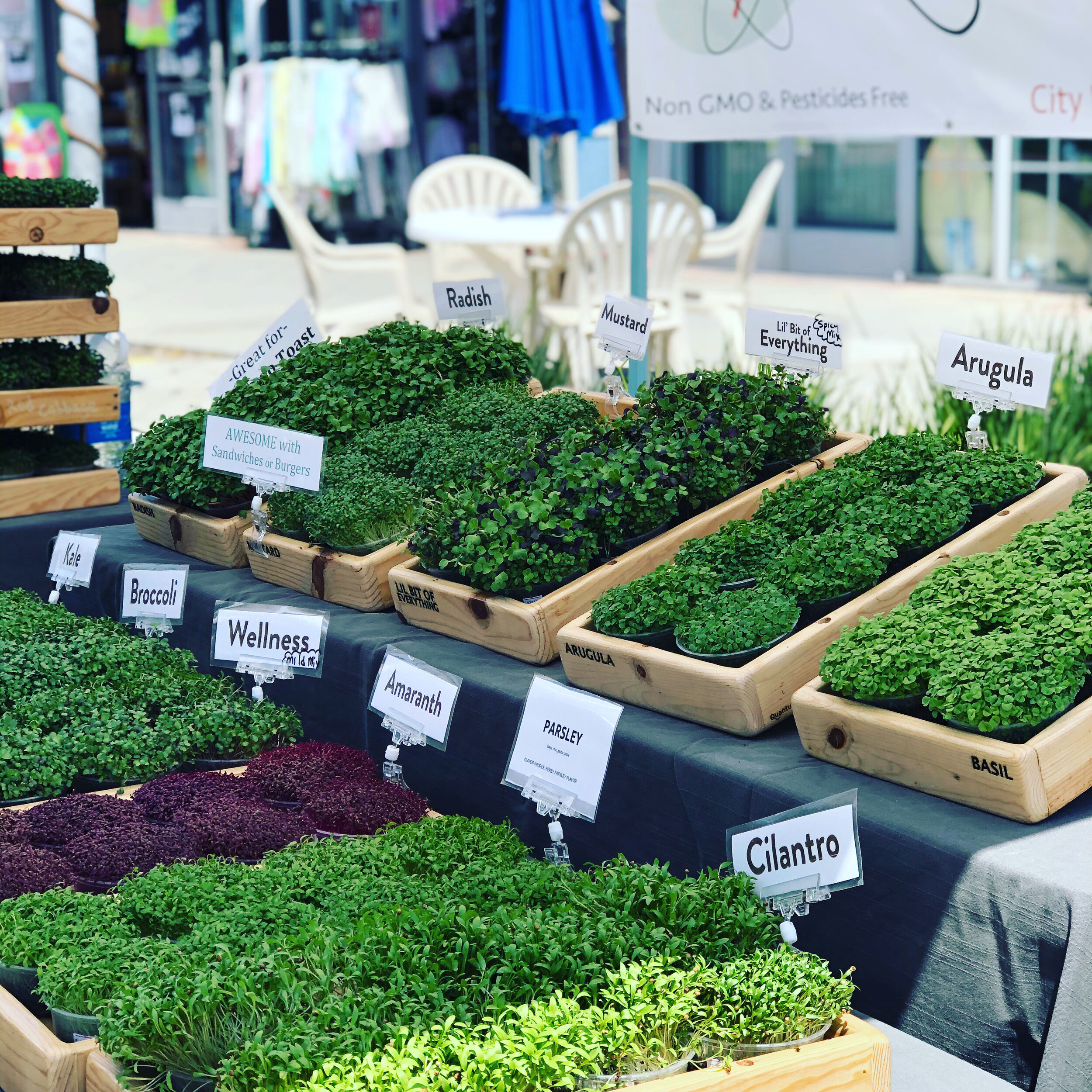Why Your Microgreens (Probably) Won't Grow Into Mature Plants
Can I plant these in my garden?
— A question I hear every week. I sell nearly all my microgreens still living: soil, roots, and all. It makes sense that perhaps the microgreens are intended for the garden, but they are not.
It isn’t that they can’t grow to full-sized plants—most of them can grow to a full-size regular plant in the garden if they were planted for that purpose.
What Makes a Microgreen?
To grow microgreens, lots of seeds are sown very close together (sometimes touching). Most microgreens are left exposed to the air without any soil placed on top. Some people grow microgreens hydroponically on a “blanket” medium (think burlap) or even paper towels. The soil, if they are using it, is usually only an inch or so deep.
Seed density for broccoli microgreens. Photo by Melissa Canales
As the seeds are watered and coaxed into growing, hundreds/thousands of roots plunge into the soil only to be abruptly stopped by the bottom of a tray. The infant plant roots begin to grow around the bottom of the tray and entangle with every other plant root. It becomes a tangle.
Twisted and Tangled Micro Beet Roots. Photo by Melissa Canales
In the beginning, each tiny plant (microgreen) gets nearly all of its energy (food) from the seed itself. The young plant’s growth is not dependent on nutrition from the soil because the seed has all the stored energy needed to begin growing. But, as that plant grows, and uses up all the energy stored in the seed, it will need to find food and nutrients in the soil.
It is at this stage that the infant plant becomes a microgreen and is ready to eat.
At this stage— the microgreens stage— the young plants are experiencing stress. They are using up all their store seed energy and are competing with hundreds of other plants for more soil and sunlight. A little stress is good for the plants but a lot of stress will cause the plant to die.
Cutting off the stem and leaves (the microgreen) to eat will cause the young plant an extraordinary amount of stress. The plant will not be able to overcome that kind of stress to grow back. That is why microgreens don’t grow back after you harvest them.
But not cutting off the stem and leaves (leaving them growing in the tray) will also eventually cause them to have an extraordinary amount of stress causing them to die. They will die because either they don’t have enough nutrients from the soil to maintain their growth or they become so stressed they are unable to fight off disease or mold or fungus, or both. Either way, microgreens will not successfully grow to maturity in their trays.
But What If I Give the Microgreens More Soil and Nutrients? Will it Grow to Maturity?
Well, maybe, but probably not. As I mentioned earlier, microgreens have been stressed out growing in their crowded and shallow trays. The roots have already wrapped around each other and have become tangled together. Consider that the microgreens are already stunted. Even if you were able to gently coax the roots apart to plant in more soil, the damage is already done.
That being said, some plants are incredibly resilient and may overcome all obstacles to grow to maturity.
My advice is simple. If you want to grow a beautiful garden with healthy mature plants don’t rely on living microgreens. Buy a packet of seeds and follow the growing and seeding density instructions, or find a nursery with healthy starts.
If you want to do an experiment, and possibly coax microgreens to maturity, go for it. But at the very least, eat most of your living tray first, and then do your experiment with the few remaining microgreens.
Onion Microgreens— The Odd Ball
Everything I just told you about growing your microgreens to maturity pretty much does not apply to onions. If you buy micro-onions, there is a very good chance you can transplant them to your garden and grow full-grown onions. Onion roots do not tangle together so much, and can be coaxed apart. I still don’t recommend it unless you know the exact variety of onion microgreen and you know whether the variety does well in your region.









There’s one smoothie ingredient that stands out from the rest for its creamy texture, rich yet mild flavor, and myriad health benefits - the avocado. This Creamy-Cool Avocado & Greens Smoothie tastes like a creamy vanilla shake that happens to be green. It also has spinach and cauliflower for added nutrition.